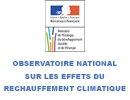Response of French Mediterranean Forests to Climate Change
Response of French Mediterranean Forests to Climate Change
The overall aims of REFORME are to examine how climate change and increasing levels of atmospheric CO2 will affect the productivity of Mediterranean forest species and the structure of Mediterranean landscapes.
We also look at the future of existing stands (regeneration, transitional stands) in the face of alterations caused by climate change to disturbances, such as fire patterns and effects on the landscapes and their diversity and structure. The model species chosen are Aleppo Pine and Holm Oak.
The authors devised a strategy which combined developing simulation models and measuring micrometeorological and ecophysiological variables to calibrate and test the models at a small spatial and temporal scale. Since the anticipated changes go well beyond the limits imposed by the fine-scale measurements that can be obtained over a few years, they also used dendrochronological series to validate century scale models across a wider region (the Provence-Alpes-Cote d’Azur and Languedoc-Roussillon regions) and measurements of key parameters linking carbon and water cycles to tree growth at three sites (Lamanon, INRA; Puechabon, CEFE; Arbois-Aix, IFR PMSE). The devices used for the measurements are part of the CARBOEUROFLUX network and comply with that network’s requirements.
Three types of mechanistic model are used. The first model (MAIDEN) simulates annual growth of the ecosystem on the basis of meteorological variables, CO2 level and constants inherent to the species and site. It simulates growth ring thickness and density according to the climate scenarios used. The second model (SIERRA) simulates the effect of the disturbance pattern on structure of the landscape. Changes in forest fire patterns, which are a very important factor in the Mediterranean climate, and changes in precipitation patterns are assessed in terms of their impact on Mediterranean forests. A regional water balance model (BILHY) is then used to set the Aleppo pine sites against a regional context (Provence).
Regionalised scenarios (produced by the Météo-France ARPEGE-IFS model) for greenhouse gas increases are used as vegetation model inputs. As well as investigating the overall trend in tree growth, variability of growth due to the intrinsic variability of the models was also investigated. The findings are compared with recorded growth for the 20th century, in order to check whether anticipated growth is significantly different from past growth. In addition to the radiative effect, we take into account the CO2 fertilisation effect, which is also an input variable in growth models. We were able therefore to separate the influences on growth of radiative and fertilisation effects, as well as assessing a potential increase in water use efficiency.
The effect of thinning to mitigate the potential negative effects of climate change was also tested. The question was: is it possible to mitigate loss of growth caused by reduced water availability by artificially reducing the density of the stand? The SIERRA model enables us to upscale to the landscape scale by incorporating the potential effects of changing fire patterns on the future of the forests in question. The results of all the sensitivity tests were scaled up, taking into account topography and physical and chemical characteristics of the dendrochronological sties, as well as the results from the water balance model.
The findings provided information on the future development of forest stands at regional level, in particular the evolution of landscapes, but also more accurate local information. The latter will be used to provide information for forest managers and decision-makers on the development of forest stands in relation to climate change, depending on their geographical location and also on the characteristics of the environment in which they are growing (topography, soil, structure).
| Coordinators |
Joël GUIOT, Université Aix-marseille 1 – UMR 6635 CNRS-CEREGE |
| Partnership |
Université Aix-Marseille 1 |
| Funding |
MEDD
|
| Budget |
128 000€ (including tax)
|




